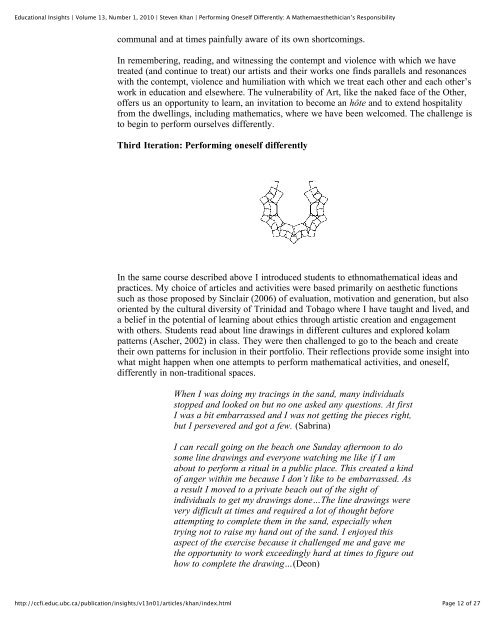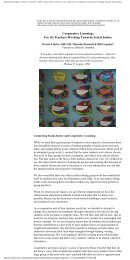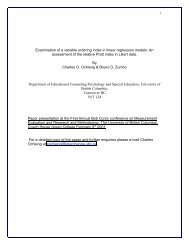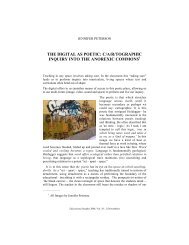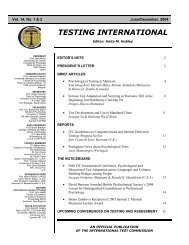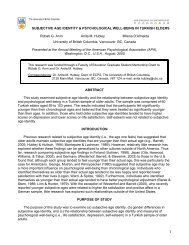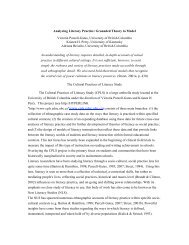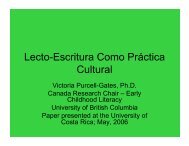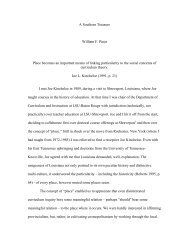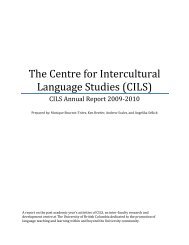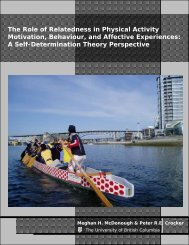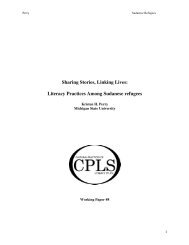Printer Version - University of British Columbia
Printer Version - University of British Columbia
Printer Version - University of British Columbia
Create successful ePaper yourself
Turn your PDF publications into a flip-book with our unique Google optimized e-Paper software.
Educational Insights | Volume 13, Number 1, 2010 | Steven Khan | Performing Oneself Differently: A Mathemaesthethician’s Responsibility<br />
communal and at times painfully aware <strong>of</strong> its own shortcomings.<br />
In remembering, reading, and witnessing the contempt and violence with which we have<br />
treated (and continue to treat) our artists and their works one finds parallels and resonances<br />
with the contempt, violence and humiliation with which we treat each other and each other’s<br />
work in education and elsewhere. The vulnerability <strong>of</strong> Art, like the naked face <strong>of</strong> the Other,<br />
<strong>of</strong>fers us an opportunity to learn, an invitation to become an hôte and to extend hospitality<br />
from the dwellings, including mathematics, where we have been welcomed. The challenge is<br />
to begin to perform ourselves differently.<br />
Third Iteration: Performing oneself differently<br />
In the same course described above I introduced students to ethnomathematical ideas and<br />
practices. My choice <strong>of</strong> articles and activities were based primarily on aesthetic functions<br />
such as those proposed by Sinclair (2006) <strong>of</strong> evaluation, motivation and generation, but also<br />
oriented by the cultural diversity <strong>of</strong> Trinidad and Tobago where I have taught and lived, and<br />
a belief in the potential <strong>of</strong> learning about ethics through artistic creation and engagement<br />
with others. Students read about line drawings in different cultures and explored kolam<br />
patterns (Ascher, 2002) in class. They were then challenged to go to the beach and create<br />
their own patterns for inclusion in their portfolio. Their reflections provide some insight into<br />
what might happen when one attempts to perform mathematical activities, and oneself,<br />
differently in non-traditional spaces.<br />
http://ccfi.educ.ubc.ca/publication/insights/v13n01/articles/khan/index.html<br />
When I was doing my tracings in the sand, many individuals<br />
stopped and looked on but no one asked any questions. At first<br />
I was a bit embarrassed and I was not getting the pieces right,<br />
but I persevered and got a few. (Sabrina)<br />
I can recall going on the beach one Sunday afternoon to do<br />
some line drawings and everyone watching me like if I am<br />
about to perform a ritual in a public place. This created a kind<br />
<strong>of</strong> anger within me because I don’t like to be embarrassed. As<br />
a result I moved to a private beach out <strong>of</strong> the sight <strong>of</strong><br />
individuals to get my drawings done…The line drawings were<br />
very difficult at times and required a lot <strong>of</strong> thought before<br />
attempting to complete them in the sand, especially when<br />
trying not to raise my hand out <strong>of</strong> the sand. I enjoyed this<br />
aspect <strong>of</strong> the exercise because it challenged me and gave me<br />
the opportunity to work exceedingly hard at times to figure out<br />
how to complete the drawing…(Deon)<br />
Page 12 <strong>of</strong> 27


